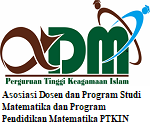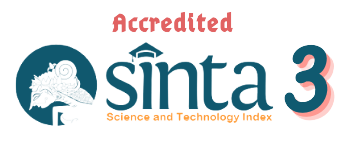Pemodelan Data Return Saham PT. Bank Republik Indonesia dengan Self-Exciting Threshold Autoregressive dan Algoritma Genetika
DOI:
https://doi.org/10.15642/mantik.2018.4.1.16-21Keywords:
Nonlinear; SETAR; Grid Search; Genetic Algorithm; Stock ReturnAbstract
Nonlinear time series model is a time series model applied to data that has the nonlinear pattern. One of the nonlinear time series models is Self-Exciting Threshold Autoregressive (SETAR). The SETAR model is a time series model that data modeling is done by dividing data into multiple regimes, whereas each regime following an autoregressive (AR) model. The division of the regime based on the score of the delay and threshold of the data itself. The number of SETAR model parameters not only resulted from the best model search process but also resulted in a SETAR model that is not yet optimum. Based on these findings, this study used Genetic Algorithm (GA) to produce the best and optimum SETAR model. In this research, using SETAR simulation data modeling and return data of Bank Rakyat Indonesia (BRI) were performed. The method used to model the data is Grid Search (GS) and Genetic Algorithm (GA). The result of analysis of SETAR simulation data shows that GA method gives better modeling result than GS method. The GA motive AIC value for the amount of 200 data is -3.976178 which is smaller than the AIC GS method of 1.361723. For the amount of data of 500 AIC values, GA method is also smaller than AIC GS method. In BRI stock return data, GA method also gives better modeling result compared to GS. It is marked by the GA AIC method value of -11147.66 less than -11146.26 which is the AIC method of GS. Thus, the result of analysis of SETAR model simulation data and BRI stock return shows that GA method gives better modeling result compared to GS method based on generated AIC value.
Downloads
References
[2] P. H. Franses dan D. van Dijk, Nonlinear Time Series Models in Empirical Finance. New York: Cambridge University Press, 2003.
[3] B. Wu dan C.-L. Chang, “Using Genetic Algorithms to Parameters (d;r) Estimation for Threshold Autoregressive Models,” Comput. Stat. Data Anal., vol. 38, hlm. 315–330, 2002.
[4] M. Sawaka, Genetic Algoritms and Fuzzy Multiobjective Optimization. Boston: Kluwer Academic Publishers, 2002.
[5] W. W. S. Wei, Time Series Analysis Univariate and Multivariate Methods. New York: Pearson, 2006.
[6] H. Tong dan K. S. Lim, “Threshold Autoregression, Limit Cycles and Cyclical Data,” J. R. Stat. Soc. Ser. B Methodol., vol. 42, no. 3, hlm. 245–292, 1980.
[7] R. S. Tsay, “Testing and Modeling Threshold Autoregressive Process,” J. Am. Stat. Assoc., vol. 84, no. 405, hlm. 231–240.
[8] D. Sri Kusuma dan H. Purnomo, Penyelesaian Masalah Optimasi dengan Teknik-teknik Heuristik. Yogyakarta: Graha Ilmu, 2005.
[9] B. Santosa dan P. Willy, Metode Metaheuristik, Konsep dan Implementasi. Surabaya: Guna Widya, 2011.
[10] R. Barogana, F. Battaglia, dan D. Cucina, “Estimating Threshold Subset Autoregressive Moving-Average Models by Genetic Algorithms,” METRON - Int. J. Stat., vol. LXII, hlm. 39–61, 2004.
Downloads
Published
How to Cite
Issue
Section
License
- Authors retain copyright and grant the journal right of first publication with the work simultaneously licensed under a Creative Commons License that allows others to share the work with an acknowledgment of the work's authorship and initial publication in this journal.
- Authors are able to enter into separate, additional contractual arrangements for the non-exclusive distribution of the journal's published version of the work (e.g., post it to an institutional repository or publish it in a book), with an acknowledgment of its initial publication in this journal.
- Authors are permitted and encouraged to post their work online (e.g., in institutional repositories or on their website) prior to and during the submission process, as it can lead to productive exchanges, as well as earlier and greater citation of published work







.png)




